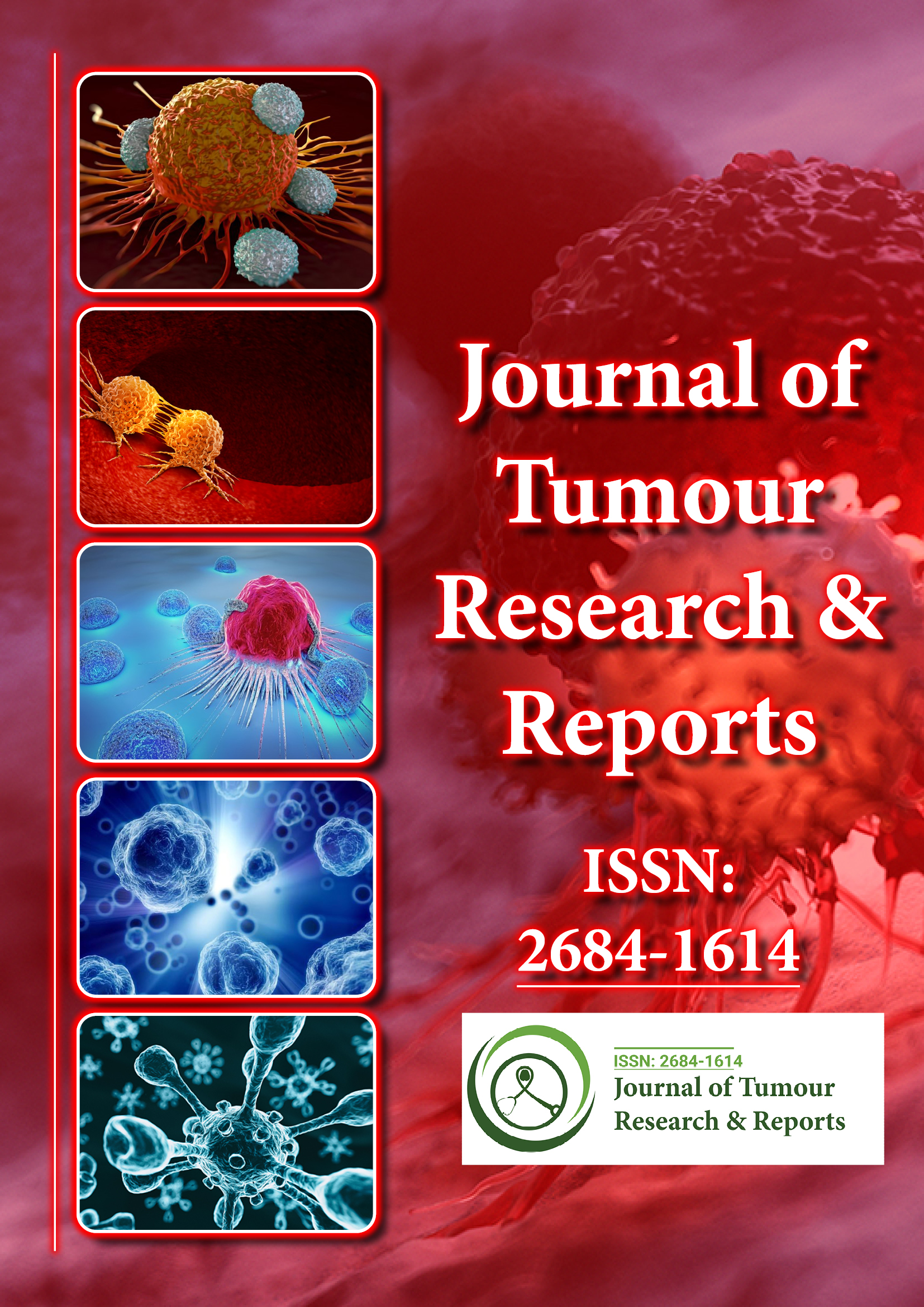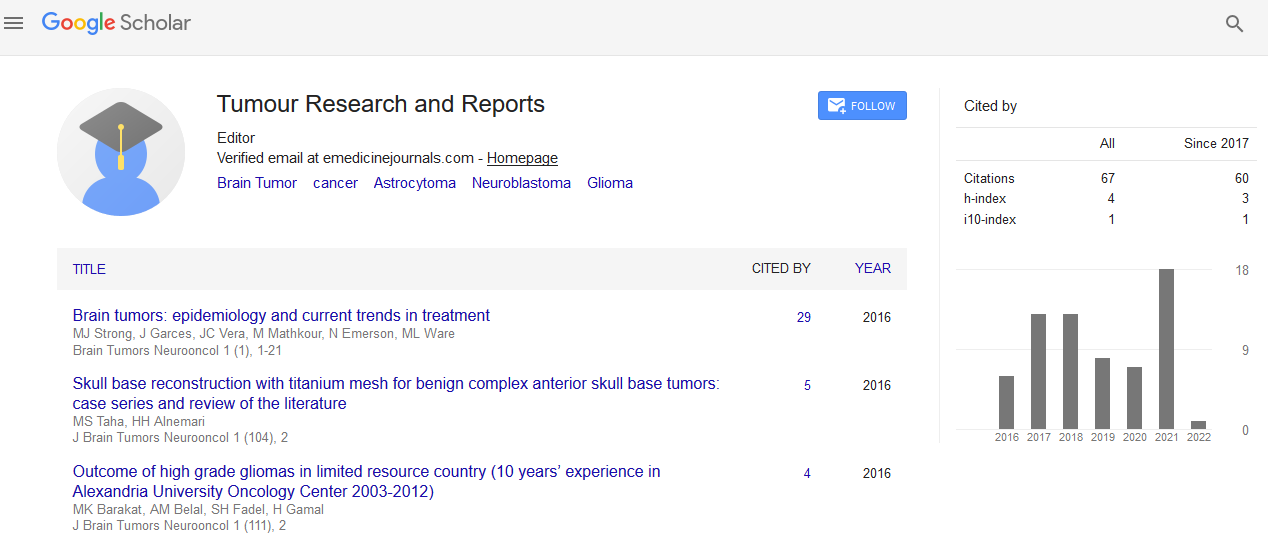Indexed In
- RefSeek
- Hamdard University
- EBSCO A-Z
- Google Scholar
Useful Links
Share This Page
Journal Flyer

Open Access Journals
- Agri and Aquaculture
- Biochemistry
- Bioinformatics & Systems Biology
- Business & Management
- Chemistry
- Clinical Sciences
- Engineering
- Food & Nutrition
- General Science
- Genetics & Molecular Biology
- Immunology & Microbiology
- Medical Sciences
- Neuroscience & Psychology
- Nursing & Health Care
- Pharmaceutical Sciences
Perspective - (2023) Volume 8, Issue 4
Detection of Microscopic Features of Breast Cancer in Digital Mammography
Michele Rosa*Received: 14-Nov-2023, Manuscript No. JTRR-23-24230; Editor assigned: 17-Nov-2023, Pre QC No. JTRR-23-24230 (PQ); Reviewed: 01-Dec-2023, QC No. JTRR-23-24230; Revised: 08-Dec-2023, Manuscript No. JTRR-23-24230 (R); Published: 15-Dec-2023, DOI: 10.35248/2684-1614.23.8:209
Description
Digital mammography has revolutionized the landscape of breast cancer detection, providing detailed insights into microscopic features that are significant for accurate tumor classification. It is an advancement over traditional film mammography, offering several advantages in terms of image quality, storage, and interpretation.
Technological advancements in digital mammography
Digital mammography replaces traditional film-based imaging with electronic detectors that convert X-rays into digital signals. This transformation facilitates a more precise examination of breast tissues. Furthermore, advancements such as Digital Breast Tomosynthesis (DBT) provide three-dimensional images, improving the visualization of complex structures and aiding in tumor characterization.
Microscopic features in tumour classification
Microscopic features play a significant role in the classification of tumors, and pathologists often rely on detailed microscopic examination to identify and categorize different types of cancers.
Architectural patterns: Digital mammography enables radiologists to ex amine the architectural patterns of breast tissues. Microscopic features, such as ductal or lobular arrangements, offer significant information for distinguishing between benign and malignant tumors.
Calcifications: The detection and characterization of calcifications, often indicative of early breast cancer, are significantly refined with digital mammography. Detailed examination of the size, morphology, and distribution of calcifications aids in determining the malignancy potential.
Margin assessment: Microscopic evaluation of tumor margins is essential for surgical planning and predicting the probability of recurrence. Digital mammography assists in precisely delineating tumor boundaries, contributing to more successful surgical interventions.
Lesion morphology: Differentiating between various lesion morphologies, such as masses, asymmetries, or focal distortions, is pivotal for accurate tumor classification. Digital mammography's high resolution allows for analysis of lesion characteristics.
Diagnostic accuracy and precision
Digital mammography significantly enhances diagnostic accuracy by providing a clear and more detailed view of breast tissues. The ability to zoom in on microscopic features aids in differentiating between precise abnormalities, reducing false positives and unnecessary interventions. Moreover, the integration of Artificial Intelligence (AI) algorithms with digital mammography further improves precision in tumor classification, offering radiologists valuable decision support.
Impact on patient outcomes
Early detection and intervention: The microscopic insights provided by digital mammography facilitate early detection of breast tumors, allowing for timely intervention and improved prognosis. Early-stage detection often translates to more conservative treatment options and better overall outcomes for patients.
Personalized treatment plans: Microscopic classification aids in customized treatment plans based on the specific characteristics of the tumor. This personalized approach ensures that patients receive interventions that are not only effective but also minimize potential side effects.
Monitoring treatment response: Digital mammography plays a vital role in monitoring the response to treatment. Microscopic changes in tumor characteristics over time help assess the effectiveness of therapeutic interventions and guide adjustments to the treatment plan.
Digital mammography is the advanced microscopic tumour classification in the breast cancer diagnosis. Its technological advancements, coupled with a focus on microscopic features contribute to increased diagnostic accuracy and personalized treatment strategies. While exploring the potentialofdigital mammography, it emerges as an indispensable tool in the fight against breast cancer, providing both clinicians and patients a clear path towards improved outcomes.
Citation: Rosa M (2023) Detection of Microscopic Features of Breast Cancer in Digital Mammography. J Tum Res Reports. 8:209.
Copyright: © 2023 Rosa M. This is an open access article distributed under the terms of the Creative Commons Attribution License, which permits unrestricted use, distribution, and reproduction in any medium, provided the original author and source are credited.

